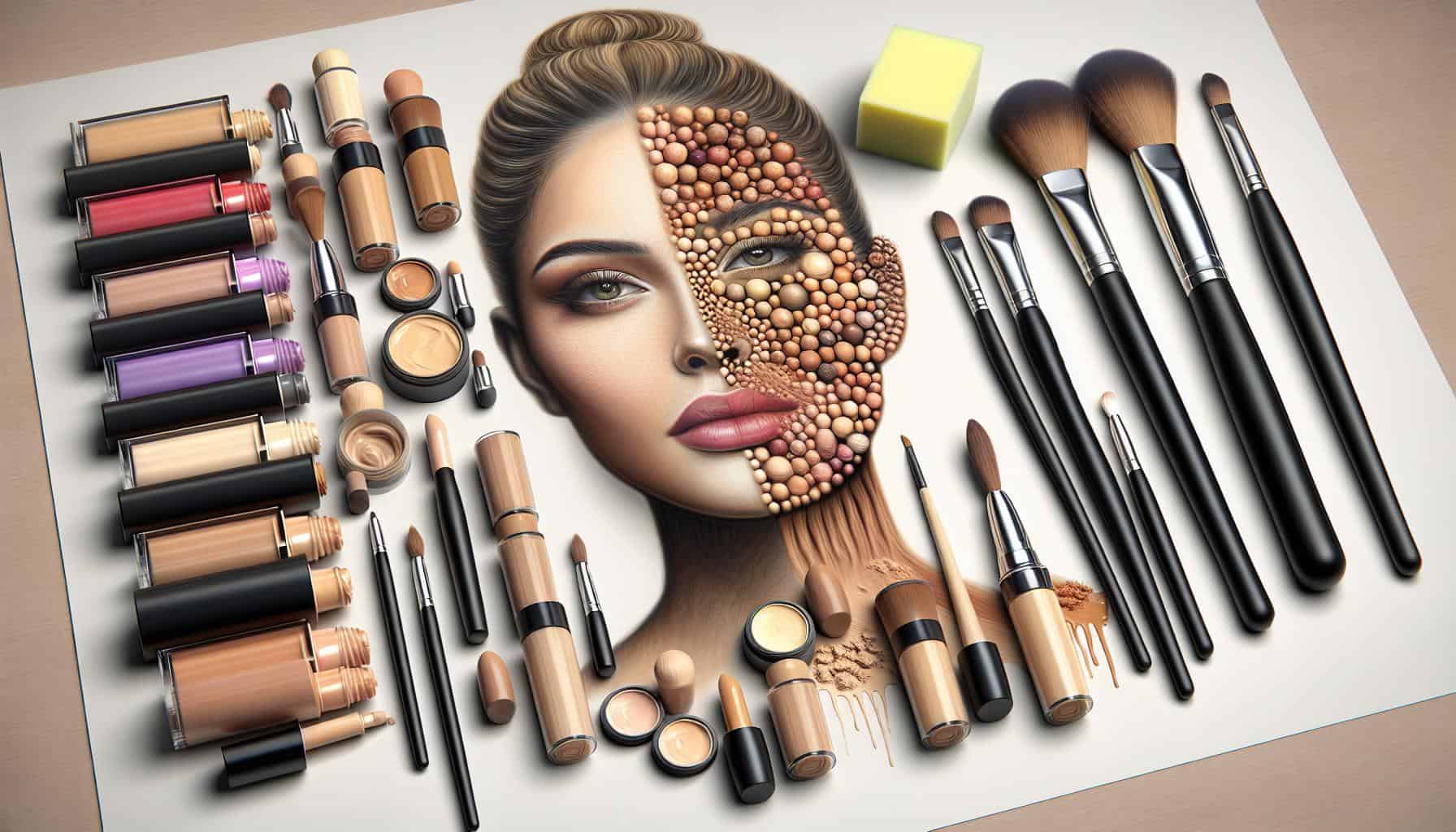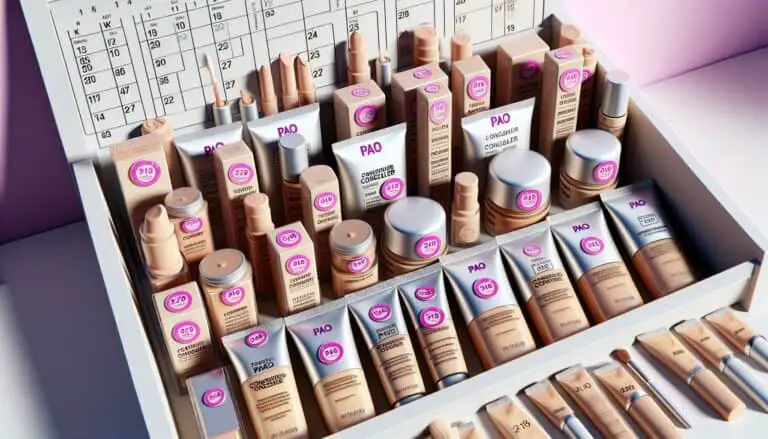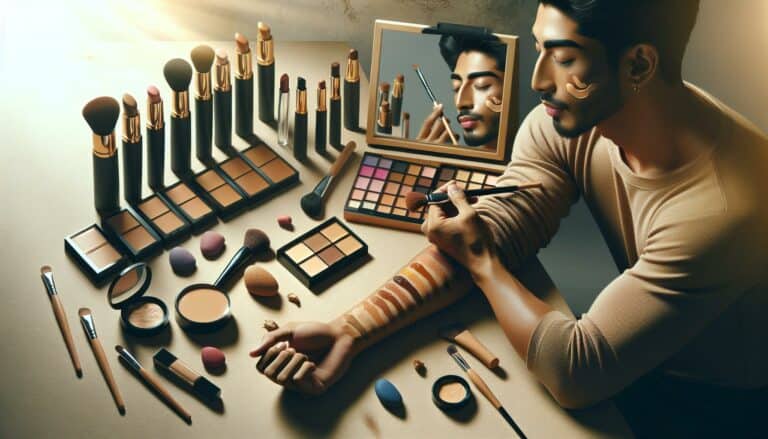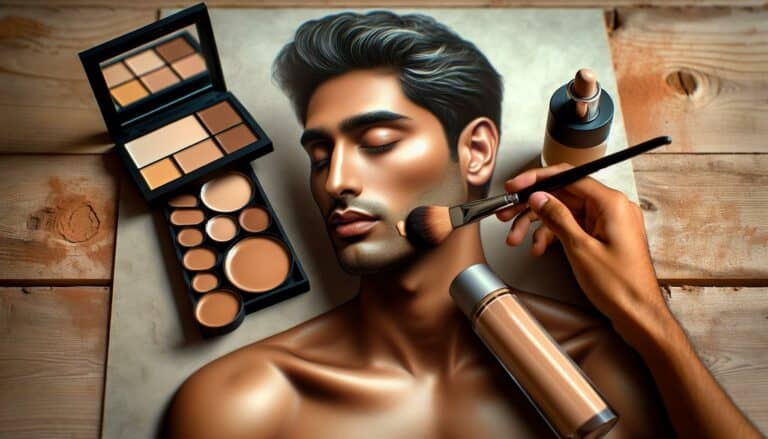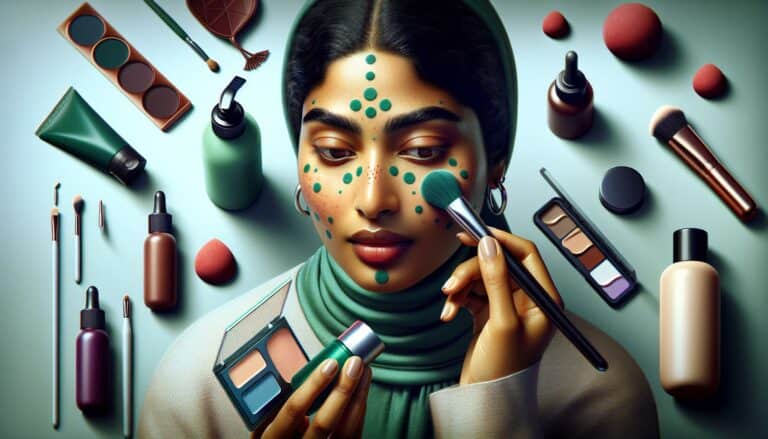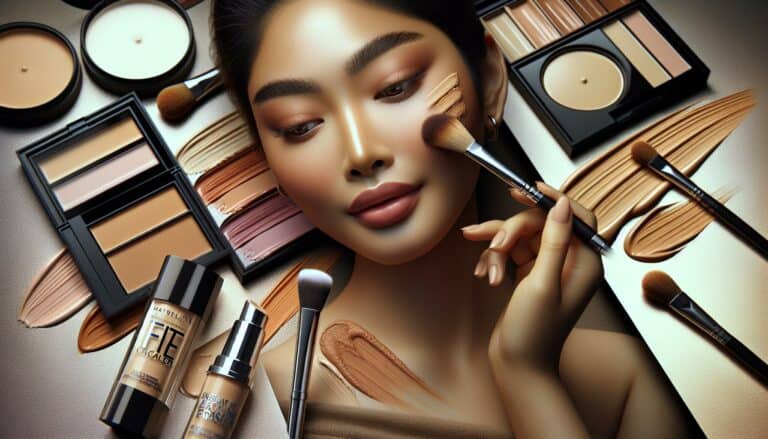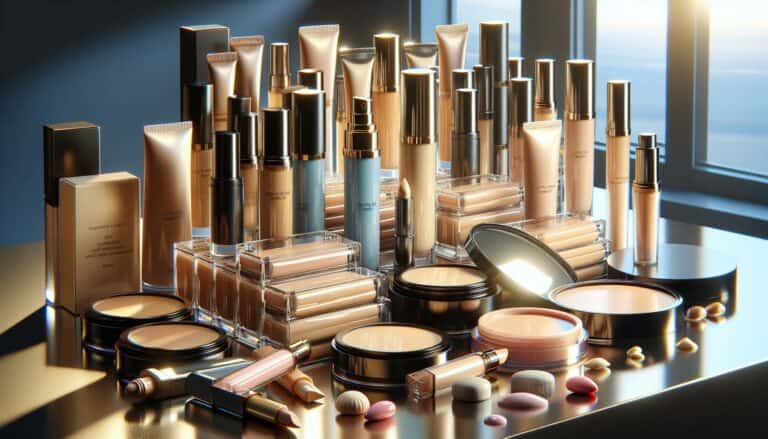Find Your Magic Wand: What the Best Concealer Can Do for You
The Importance of Concealer in Your Makeup Routine
Concealer isn’t just another layer in your daily makeup routine; it’s the magic wand that tackles everything from dark circles to blemishes, transforming your look entirely. Think of it as the secret weapon hiding in plain sight in your makeup bag. It’s the product that can take your face from “just woke up” to “ready to take on the world” in a matter of minutes.
When it comes to makeup, many often focus on eye shadows and lipsticks, but concealer is the true foundation of a flawless look. It works hard behind the scenes, ensuring any imperfections are artfully hidden and your best features stand out. Finding the right concealer is just as crucial as selecting the perfect foundation shade.
“A good concealer can significantly elevate your makeup game, turning a good look into a great one.”
Let’s not forget how versatile concealer can be. Apart from hiding imperfections, it’s also perfect for highlighting and contouring. With just a few strategic swipes, you can define your cheekbones, brighten your eyes, and even alter the shape of your nose.
Here’s a quick glance at why concealer is indispensable:
| Feature | Importance |
|---|---|
| Coverage | Hides blemishes, dark circles, and redness |
| Versatility | Can be used for highlighting and contouring |
| Transformation | Elevates the overall makeup look |
And it’s not just about hiding what you’d rather not show; it’s about enhancing your natural beauty. The right concealer does both, proving itself as a vital component of your makeup regimen. Whether you’re prepping for a day at the office or a night out, starting with a good concealer sets the stage for everything that comes after.
Understanding Your Skin’s Needs
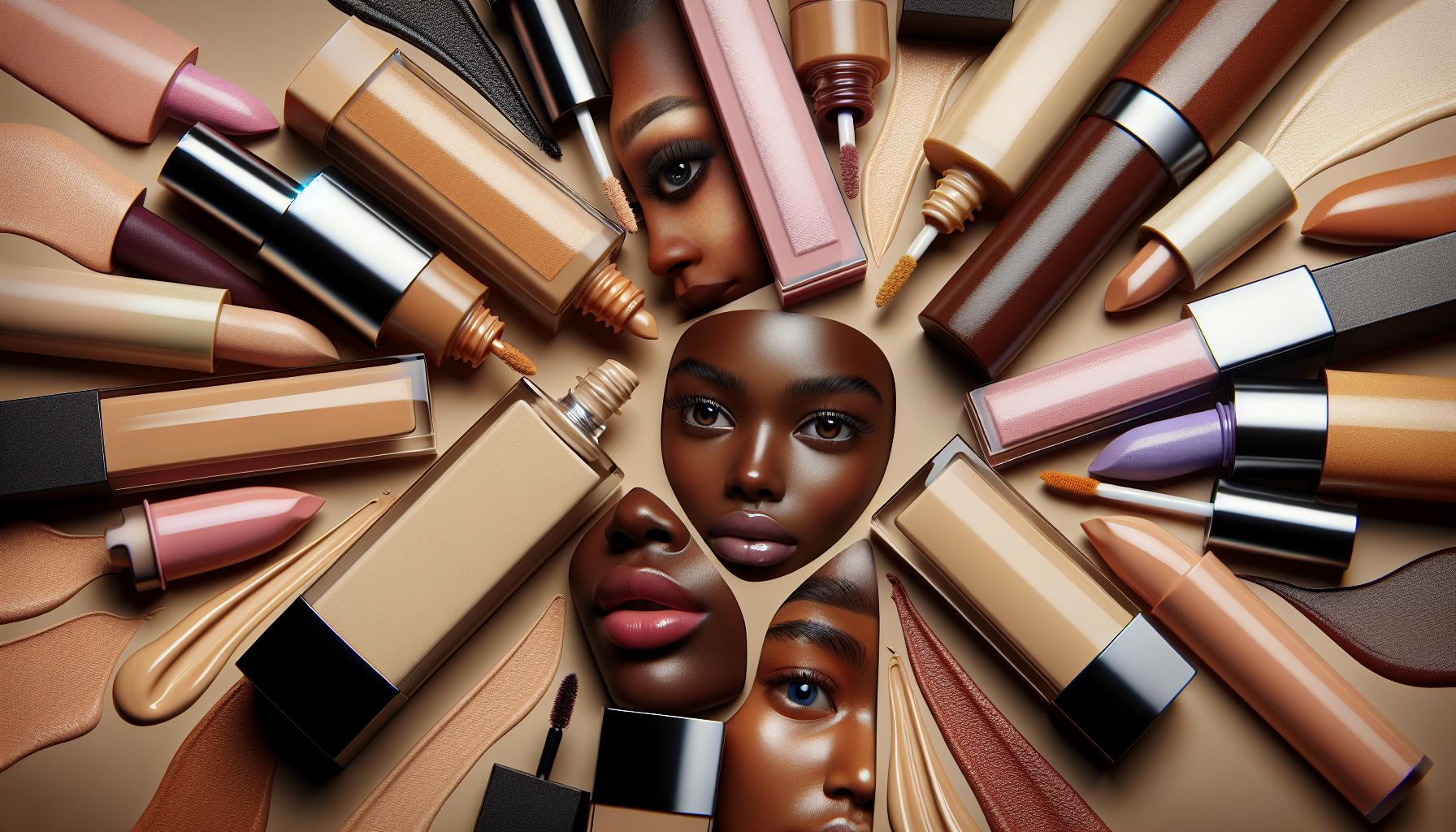
Before diving into the ocean of concealer choices, it’s crucial to understand your skin’s needs. Your skin type, concerns, and the look you’re aiming for all play pivotal roles in finding your concealer soulmate.
For starters, identify your skin type. Is it oily, dry, combination, or normal? Each type demands a different formula:
- Oily skin embraces mattifying concealers.
- Dry skin yearns for hydrating formulas.
- Combination skin requires a versatile concealer.
- Normal skin can experiment with various types.
Next, pinpoint your primary concerns. Are you tackling dark circles, redness, blemishes, or discoloration? Here’s a quick guide:
| Concern | Recommended Concealer Type |
|---|---|
| Dark Circles | Peach or orange-tinted |
| Redness | Green-tinted |
| Blemishes | Dense, matte |
| Discoloration | Yellow or lavender-tinted |
Remember, the goal is not to mask but to enhance your natural beauty. Layering is key. Start with a thin layer and build up only where needed. This ensures a look that’s both flawless and natural.
“The best concealer is one that addresses your concerns without feeling like an extra layer on your skin.” – Anonymous
Lastly, consider the finish you desire. Whether it’s matte, dewy, or natural, there’s a concealer out there for you. But don’t forget to blend well; even the most perfect shade can look off if not blended seamlessly into your skin.
Different Types of Concealer
When searching for the best concealer, you’ll come across several types, each tailored to meet different needs. Understanding what each type offers can make a significant difference in your makeup routine.
Liquid Concealer is the jack-of-all-trades in the concealer family. Perfect for most skin types, especially oily skin, it provides a buildable coverage ranging from light to full. It’s particularly effective for under-eye areas and for covering redness or discoloration.
Cream Concealer offers more coverage than its liquid counterpart, making it an ideal choice for hiding blemishes and dark spots. It works wonders for normal to dry skin, providing a smooth finish that doesn’t cake.
For those with oily skin or who prefer a matte finish, Stick Concealer is your go-to. Its thick, creamy texture provides full coverage and is perfect for targeting specific areas.
Lastly, Color Correcting Concealers come in various hues to neutralize different skin concerns before applying your skin-toned concealer. Green counters redness, peach for dark circles, and yellow for dullness.
| Type | Best for | Coverage | Finish |
|---|---|---|---|
| Liquid | Oily/Acne-prone Skin | Light to Full | Varies |
| Cream | Normal/Dry Skin | Medium to Full | Natural |
| Stick | All, Prefers Full Cover | Full | Matte |
| Color Correcting | Neutralizing Discolor | Varies | Varies |
“Finding the right type of concealer is like finding a best friend – it complements you perfectly and is always there when you need it.”
Remember, the ideal concealer does more than hide flaws; it highlights your natural beauty. Experiment with different types until you find your perfect match, and don’t be afraid to mix and match for various parts of your face to achieve a flawless look.
Decoding the Right Shade for You
Selecting the perfect shade of concealer isn’t just about matching it to your foundation. It’s a bit more nuanced, involving an understanding of your skin’s undertones and the specific imperfections you’re aiming to conceal.
Your skin’s undertone plays a pivotal role in this selection process. They generally fall into three categories:
- Warm (yellow, peachy, golden)
- Cool (pink, red, bluish)
- Neutral (a mix of warm and cool)
To identify yours, look at the veins on your wrist. If they appear more blue or purple, you’re likely in the cool camp. Greenish veins suggest warm undertones, while difficulty in discerning the color points to neutral.
For targeting dark circles or discoloration, opt for a concealer 1-2 shades lighter than your skin. Concealing blemishes? Match the concealer to your skin tone to avoid drawing attention to the spot.
Here’s a quick reference to help you decide:
| Concern | Suggested Concealer Shade |
|---|---|
| Dark Circles | 1-2 Shades Lighter |
| Blemishes | Match Skin Tone |
| General Brightening | 1 Shade Lighter |
Remember, the key to a natural, flawless finish is blending, so don’t hesitate to mix shades if necessary.
“The right concealer can make all the difference—it’s not just about the color, but how you apply it.” – Makeup Expert
Finally, taking into account the lighting in which you’ll most often be viewed is crucial. Natural daylight is best for testing shades, as artificial lighting can misrepresent the color. Always test a small amount on your jawline, blending outward, to ensure a seamless match.
Tips for Applying Concealer Like a Pro
Mastering the art of applying concealer can truly elevate your makeup routine, transforming your look from good to flawless. It’s not just about dabbing a bit of concealer on and hoping for the best. There are techniques and tricks that can help you achieve a professional-level finish, and it all starts with how and where you apply it.
First, remember to always apply your concealer after your foundation. This helps you avoid using more product than necessary, as the foundation will already cover some imperfections. For dark circles under the eyes, apply the concealer in a triangular shape with the base along your lower lash line and the point toward your cheek. This not only conceals but also brightens and lifts the entire area.
When it comes to blemishes and redness, it’s crucial to pat the concealer onto the area rather than rub. Rubbing will just spread the product around, reducing its effectiveness. A small brush or your fingertip can be the perfect tool for this job, allowing for precise application.
To ensure your concealer doesn’t crease, especially under the eyes, setting it with a translucent powder is a game changer. But remember, less is more. A light dusting is all you need to lock the concealer in place without it looking cakey.
Here’s a quick guide to help you remember these tips:
| Tip | Area | Technique |
|-------------------|------------|-----------------------|
| Apply after found.| General | Avoids excess product |
| Triangular Shape | Under Eyes | Brightens & Lifts |
| Pat don't Rub | Blemishes | Increases Effectiveness|
| Light Dusting | General | Prevents Creasing |
Pro Tip: Always blend concealer edges well to ensure there are no harsh lines. This blending makes all the difference between your makeup looking done and it looking professionally done.
Adopting these practices will not only make your concealer work harder for you, but it’ll also give you that seamless, natural finish that we all strive for in our makeup looks. Whether you’re tackling under-eye shadows or an unexpected blemish, these tips will have you covered, quite literally.
Finding the Best Concealer for Your Specific Needs
When you’re on the hunt for the perfect concealer, knowing your skin type and concerns is key. Whether you’re battling dark circles, redness, blemishes, or looking for something to highlight and contour, the right concealer is out there for you.
First things first, consider your skin type. If you have dry skin, look for a hydrating or creamy formula to prevent flakiness. For oily skin, a matte finish concealer that won’t slide off is your best bet. And if you’re somewhere in the middle, a balanced formula that’s neither too drying nor too emollient is ideal.
But it’s not just about skin type; your skin tone plays a crucial role too. To match your skin perfectly, test concealers on your jawline and observe them in natural light. The goal is to find a shade that blends seamlessly into your skin without looking ashy or too warm.
For those specific concerns:
- Dark Circles: Opt for a peach or orange-toned concealer if you have a fair to medium skin tone. Deep skin tones benefit from a rich orange or even red-toned concealer.
- Redness and Blemishes: Green-toned concealers can neutralize red spots, but always top with a concealer that matches your skin tone.
Here’s a quick guide to help you remember:
| Skin Concern | Tone Suggestion |
|---|---|
| Dark Circles | Peach/Orange for fair to medium skin, Red for deep skin |
| Redness | Green to neutralize, then match skin tone |
“The key to concealer is not just about hiding, it’s about revealing your natural beauty by addressing your specific needs.” – Makeup Expert
Finally, always make sure to set your concealer with a translucent powder to ensure it stays in place all day. Remember, the right tools—a small concealer brush or a beauty sponge—can make application precise and effortless.
Conclusion
In your journey to find the best concealer, remember that the perfect product will not only hide imperfections but also enhance your natural beauty. It’s a tool for both correction and expression. With a plethora of options available, making the right choice can seem daunting. However, armed with the knowledge of what works for your skin type and concerns, you’re well on your way.
Here are a few key pointers to remember:
- Texture and Formula are critical based on your skin type.
- Color Matching is essential for a natural look.
- Application Techniques differ for under-eyes and blemishes.
“The right concealer can turn a good makeup day into a great one.”
Below is a quick guide to help you decide:
| Skin Concern | Recommended Concealer Tone |
|---|---|
| Dark Circles | Peach or Orange |
| Redness | Green |
| Dullness | Lavender |
It’s also important to consider the tools you’re using. For a seamless finish, invest in a high-quality concealer brush or sponge. These tools can make a significant difference in how your concealer blends into the skin, avoiding the dreaded cakey or patchy look.
In the end, your concealer should feel like a second skin—comfortable, undetectable, and perfectly blended. By focusing on what works best for your unique features and skin needs, you’ll not only conceal imperfections but also boost your confidence. And isn’t that what makeup is all about?

